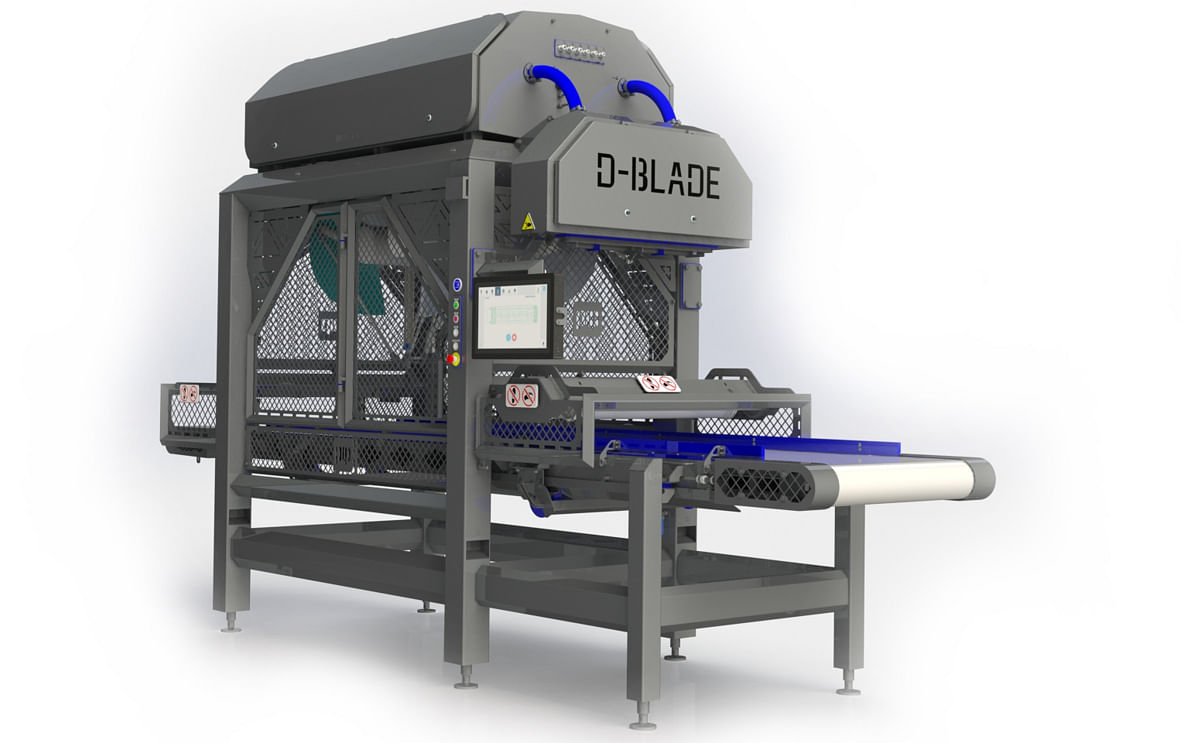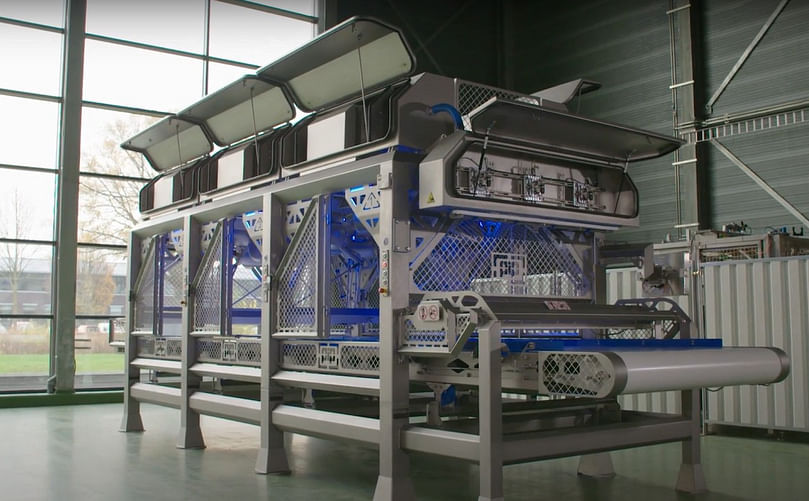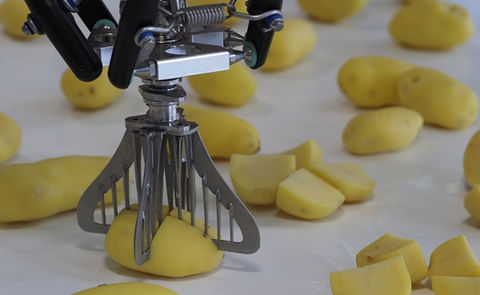Revolutionize your production process with cutting technology using delta robots, machine vision and patented multipurpose blade designs. D-BLADE is the first potato processing machine in existence that uses delta robots and vision technology.
The two delta robots in the machine can cut potatoes 3–5 times per second per robot with exceptional precision.
Custom made software for all your cutting needs
D-Blade allocates the required cuts exactly where you need them to be by means of Vision technology. The full system is customized to meet the customer's specific requirements, for optimal performance and efficient processing.
The machines are flexible and low maintenance, with the ability to make software adjustments. With deep learning, the machine continues to improve its performance and gain experience by recognizing patterns and making improvements to the code. The machine remains up-to-date, and its performance is optimized through regular updates from their software developers.
Revolutionize your potato processing line, improve the quality and maximize efficiency with the latest cutting technology.
- Defect removal: Remove defects from potato slices or fries
- Halving potatoes: Cutting potato in halves across width or length
- Quartering potatoes: Quarter potato in 4 parts with one cut
- Dynamic portioning: Cut potato once or twice depending on size
- Hasselback potatoes: Production of the famous Hasselback potato
- Baked potatoes: Cut cross halfway through potato
- Sweet potatoes dynamic portioning: Cut potato once or twice depending on size
Benefits of intelligent robotic cutting
- High Yield:Only remove what you need to remove
- High Capacity:Up to 4 cuts per second per robot
- Improved Product Quality:Precise position of the cut and clean, straight cuts
- Handle any Size or Shape:Size or shape do not matter
- Low Maintenance:Few moving parts and open accessible design
- Defect Removal:Remove defects from your produce
A 360-view of the D-Blade cutter developed by PIP Innovations








